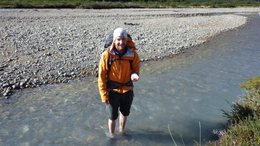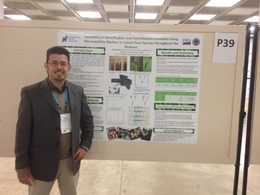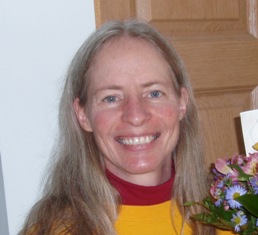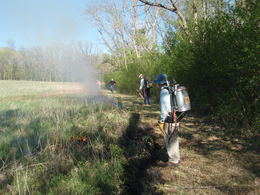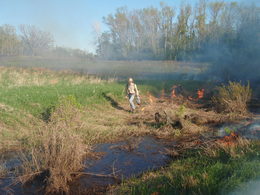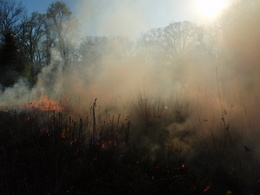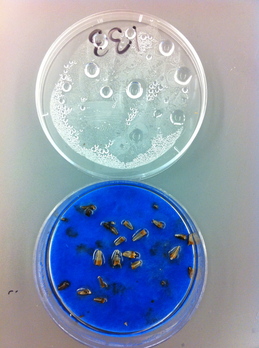|
|
My name is Mike Howe and I am a senior at Gustavus Adolphus College in St. Peter Minnesota. After spending one summer studying plant demography and pollen limitation in prairies, I was lucky to get involved with the Echinacea Project for this summer.
This summer I will be working with Dr. Pamela Kittelson focusing on how genetic diversity interacts with herbivory and ecophysiological traits. One of the ecophysiological traits we hope to explore is photosynthetic rate using a LiCor-6400 machine. It should be interesting to relate photosynthesis and other ecophysiological traits to genetic diversity.
In my spare time, I am an avid cyclist, runner, and I Nordic ski for Gustavus. I am planning on exploring the roads around Kensington via my bike and rollerskis! Hope to see you around up here!

Valle Hermosa, Future Patagonia National Park, Aysen, Chile
I am an undergraduate student from Northeastern Illinois University (NEIU). Although I was born and raised in Venezuela (South America), I consider the American Midwest my home. Due to the high degree of anthropogenic disturbances in this region, I am very interested in studying its ecology. Particularly, I am interested in the effect that invasive species and habitat fragmentation has in native species and communities
During these the last two weeks, I have had the opportunity of experience the American prairie as never before. I have discovered a new entire world of colors and shapes. Even though there are only remnants of prairie, it is really impressive the beauty of this type of habitat.
I have been exposed to a lot of wonderful experiences. Since searching adult, juvenile, seedlings, and flowering plants to mapping sites and operating GPS.
As an independent project, I will determine the likelihood of hybridization between echinacea angustifolia and echinacea pallida (maybe purpurea too)in nature. In order to do that, I will have to determine if there is synchrony between them and at what level this different species of plants share pollinators. It will promise to be an interesting and wonderful summer for me in this beautiful state. 
Team Echinacea in Minnesota had a busy and productive first week of field work. Unfortunately we have been unable to log in to the flog to tell you what we have been doing. Something at the U has changed how to log in and we are stuck–arg. We will update you as soon as we can! This week we plan to search for Echinacea seedlings, flag the main common garden experiment, and start assessing survival in the recruitment experiment. I hope team members will be able to update progress on their independent projects.
June is a transitional time for the Echinacea Project. Stuart left for Minnesota last Saturday and has begun working with a new crop of field interns. They will update the flog throughout the summer to introduce themselves and describe their adventures.
Stuart’s four advisees at Northwestern–Josh Drizin, Katherine Muller, Karen Taira, and Maria Wang–are getting ready to move on to new endeavors. Maria is staying at Northwestern for one more year to complete a Master’s degree. As much as she loves her grasses, she is embarking on a topic closer to her home territory: the population genetics of a Malaysian crop species. Katherine is moving on to a PhD program at the University of Minnesota, Josh is applying for conservation jobs, and Karen is preparing to defend her thesis in the fall.
Back in the lab, there is enough counting, randomizing, and weighing to keep our volunteers busy all summer. All of the counting for harvest years 2010 through 2012 have been entered into the new online data entry system at echinaceaproject.org/lab. That means that we will be able to keep track of their progress throughout the summer without the hassle of paper datasheets. As of today, 69% of the assignments have been completed. Counting for 2010 is nearly finished and 2011 is over half-way there.

It’s great to think of the arrival of so many new Team Echinacea members in Douglas County today!! I’ve been glad to get to know Ilse in advance of the field season – she did a great job analyzing one of the long-accumulating Echinacea datasets, using aster analysis, a statistical approach for evaluating lifetime fitness from its underlying components of survival and fecundity. Charlie Geyer’s work to develop aster modeling was stimulated by our data on Echinacea. We have learned a lot about our remnant populations of Echinacea from the aster analyses we’ve completed over the last several years (see Resources page), and other analyses, in addition to Ilse’s, are in progress. Besides our regular use of aster modeling, it is now being used to study fitness in many other species.
I’m looking forward to seeing you all and working with you on Wednesday!

Hello! I’m Amy Dykstra, and I will be participating with the Echinacea project part time this summer, beginning sometime after June 18.
I have been involved with the project since 2006, and am looking forward to meeting this year’s Team Echinacea!
Thursday marked my last day in the lab for the spring and I was able to discuss my plan for the upcoming fall quarter. I will continue to complete my data set identifying ants from sites in order to compare the effect of proximity to Echinacea with ant diversity. I look forward to getting a more complete picture of the species composition in these areas and hopefully seeing some interesting trends! Hope everyone has a wonderful summer!
Hello again!
This past week I was given the chance to present my findings from my project this quarter at a research expo held at Northwestern. I used a poster (attached) as a visual aide to help compare the trends and correlations observed between the frequency of fire and the presence of Echinacea on ant diversity in the two sites, SPPE and SPPW. It was a great experience to be able to talk to others about what I have been working on and getting to see what my classmates at Northwestern have been researching too!
linkingants3.pdf
On Thursday, 23 May 2013, Brad Dykstra and I (Amy Dykstra) helped Stuart and his parents burn the common garden (C1). The burn was slow and thorough. Some photos follow.
 We started at the south end of the plot. We started at the south end of the plot.
 At times, the fire was quite smokey. At times, the fire was quite smokey.
 Here, Stuart lights vegetation in the ditch along the west side of C1. Here, Stuart lights vegetation in the ditch along the west side of C1.
 We also burned the ’99 South plot. We also burned the ’99 South plot.
Throughout the past semester, I have been interning in Dr. Stuarts lab, working with Echinacea angustifolia. I performed two experiments during my time there. One comparing the differences in growth for two pre-germination methods. For this experiment, I measured the hight of the plant on three separate dates in order to determine the plant success for five cohorts.
No analysis was performed on Cohorts 4 and 5 because there was no growth for any of these plants. All plants with a height of 0 at the last day of measurement were considered dead.
We performed an ANOVA using R to compare the mean heights of Cohorts 1 and 2 at each age at which they were measured. After performing analysis for Cohorts 1 and 2, we found that there was no significant difference in the heights of the plants germinated using the Blotter method than those plants germinated using the Agar method. These results were similar for each of the three ages at which the plants were measured: 14, 28, and 35.
In addition to the three measurements performed on each of the plants, I also chose a single day in which to measure all of the plants. On March 19, I measured each of the 418 plants. We performed an ANOVA analysis on the mean heights of living plants on this single day in order to see if there was a cohort effect on the measurements. We found that there was no difference in measurements of the plants among treatments, but that height does differ among cohorts 1 and 2, according to a linear model, which we had expected.
There is much more analysis which can be done with the data collected and which we hope to do in the future, including comparisons for rate of emergence, timing of emergence, and survival of individual plants.

This image shows a dish of achenes pre-germinated using the blotter method.

This image shows a dish of achenes pre-germinated using the agar method.
I will also be working on the analysis of my second experiment throughout the summer, involving the comparisons of plant growth and plant morphology for four crosses between Echinacea angustifolia and Echinacea pallida. So keep an eye out for updates!
|
|

